Grace Elliot's Blog: 'Familiar Felines.' , page 26
November 30, 2011
Lillie's Love Nest.
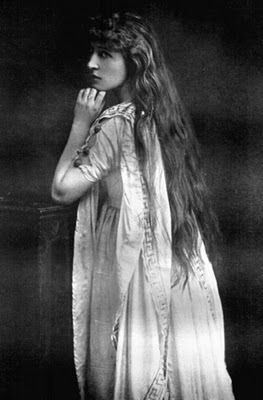 The Jersey Lillie "Lillie Langtry."A chance mention in a local paper of the Langtry Manor hotel, triggered this week's blog post. The Langtry Manor resonates with me because my wedding reception was held there and its where I spent the first night of married life. Now I wont bore you with how my wedding was organised at 2 weeks notice and a quirk of fate meant our dream venue was free…because what I wanted to share was the history of this fascinating building and how it was Edward VII's love nest for his mistress Lillie Langtry.
The Jersey Lillie "Lillie Langtry."A chance mention in a local paper of the Langtry Manor hotel, triggered this week's blog post. The Langtry Manor resonates with me because my wedding reception was held there and its where I spent the first night of married life. Now I wont bore you with how my wedding was organised at 2 weeks notice and a quirk of fate meant our dream venue was free…because what I wanted to share was the history of this fascinating building and how it was Edward VII's love nest for his mistress Lillie Langtry.
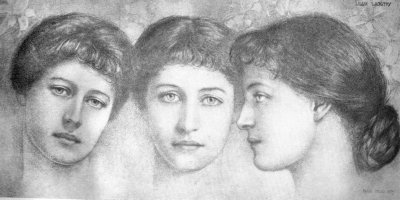 Pencil sketch of Lillie by Frank Miles.
Pencil sketch of Lillie by Frank Miles.
To understand the Langtry Manor, you need to know about the lady it was bought for. Lillie Langtry was born in Jersey, 1853 as Emilie Charlotte Le Breton. The daughter of a clergyman, with six brothers she grew up a tom boy. Eager to have adventures of her own and surprised by the male interest, she married young Edward Langtry just six weeks after meeting him. It was a rushed ceremony, with the couple dressed in travelling clothes, because Edward wanted to catch the tide for his yacht "Red Gauntlet"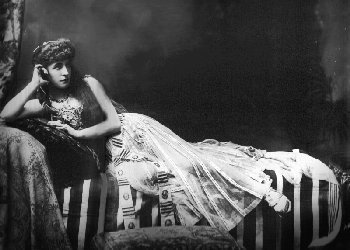 Lillie, as Cleopatra.
Lillie, as Cleopatra.
But Lillie's new life bored her and after a bout of illness, she went to London to convalesce. In April 1877 she was walking in Hyde Park when a young artist, Walford Graham Robertson spotted her. He noticed a young woman and approaching and from her plain black bonnet and dress assumed her to be a milliner's assistant. Robertson goes on to record:
"…the girl looked up and I all but sat flat down in the road. For the first and only time in my life I beheld perfect beauty!"
Her looks and creamy complexion soon earnt her the nickname 'the Jersey Lillie'. Her beauty made her famous and provided an entrée into society. The Countess of Warwick described her thus:
"She had dewy violet eyes, a complexion like a peach. How can words convey the vitality, the glow, the mazoing charm tha made this fascinating woman the centre of any group she entered?"
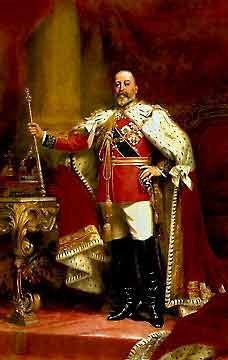 Edward VII.
Edward VII.
Artists flocked to paint her and a portrait by Sir John Millais came to Albert Edward, Prince of Wales (later King Edward VII) attention. He had his equirries engineer a discrete meeting with Lillie, which eventually led to her becoming his mistress. The problem then presented itself as to how they could meet privately. The Prince of Wales chose the rising seaside resort of Bournemouth, for their love nest. A building was commissioned and started in 1877 with Lillie's initials carved into the foundation stone. Made of red brick (in subsequent decades painted a horrid peach colour) she called the building "The Red House" and had a wall plaque mounted saying "Dulce Domum" (Our Sweet House.)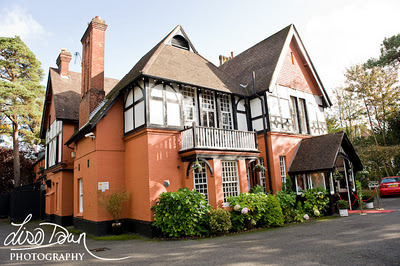 The Red House - or Langtry Manor - as it is today.
The Red House - or Langtry Manor - as it is today.
The Red House became a refuge for Edward VII from the rigours of court. He had a peep hole built into the dining room wall, so he could check who was present before deciding whether to enter or not. Above this same room is a mintrels gallery, carved with the motto:
"They say? Let them say!"
With the passage of time The Red House was sold and became a hotel 'The Langtry Manor.' There were numerous secret passages and stairways, for him to visit his mistress anonymously. Although Edward took other mistresses, he remained friends with Lillie to the end of his life. Lillie divorced Edward Langtry in 1887 and went on to enjoy a career on the stage. She died aged 75 in 1929.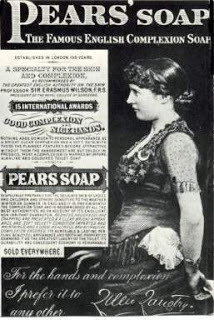 Lillie endorsing Pears soap!
Lillie endorsing Pears soap!
All of which means that you can appreciate the significance of the Langtry Manor and what a romantic location it was for my wedding.How about you - what memories do you have of your wedding venue? Leave a comment and share it with us.
 The Jersey Lillie "Lillie Langtry."A chance mention in a local paper of the Langtry Manor hotel, triggered this week's blog post. The Langtry Manor resonates with me because my wedding reception was held there and its where I spent the first night of married life. Now I wont bore you with how my wedding was organised at 2 weeks notice and a quirk of fate meant our dream venue was free…because what I wanted to share was the history of this fascinating building and how it was Edward VII's love nest for his mistress Lillie Langtry.
The Jersey Lillie "Lillie Langtry."A chance mention in a local paper of the Langtry Manor hotel, triggered this week's blog post. The Langtry Manor resonates with me because my wedding reception was held there and its where I spent the first night of married life. Now I wont bore you with how my wedding was organised at 2 weeks notice and a quirk of fate meant our dream venue was free…because what I wanted to share was the history of this fascinating building and how it was Edward VII's love nest for his mistress Lillie Langtry.
 Pencil sketch of Lillie by Frank Miles.
Pencil sketch of Lillie by Frank Miles.To understand the Langtry Manor, you need to know about the lady it was bought for. Lillie Langtry was born in Jersey, 1853 as Emilie Charlotte Le Breton. The daughter of a clergyman, with six brothers she grew up a tom boy. Eager to have adventures of her own and surprised by the male interest, she married young Edward Langtry just six weeks after meeting him. It was a rushed ceremony, with the couple dressed in travelling clothes, because Edward wanted to catch the tide for his yacht "Red Gauntlet"
 Lillie, as Cleopatra.
Lillie, as Cleopatra.But Lillie's new life bored her and after a bout of illness, she went to London to convalesce. In April 1877 she was walking in Hyde Park when a young artist, Walford Graham Robertson spotted her. He noticed a young woman and approaching and from her plain black bonnet and dress assumed her to be a milliner's assistant. Robertson goes on to record:
"…the girl looked up and I all but sat flat down in the road. For the first and only time in my life I beheld perfect beauty!"
Her looks and creamy complexion soon earnt her the nickname 'the Jersey Lillie'. Her beauty made her famous and provided an entrée into society. The Countess of Warwick described her thus:
"She had dewy violet eyes, a complexion like a peach. How can words convey the vitality, the glow, the mazoing charm tha made this fascinating woman the centre of any group she entered?"
 Edward VII.
Edward VII. Artists flocked to paint her and a portrait by Sir John Millais came to Albert Edward, Prince of Wales (later King Edward VII) attention. He had his equirries engineer a discrete meeting with Lillie, which eventually led to her becoming his mistress. The problem then presented itself as to how they could meet privately. The Prince of Wales chose the rising seaside resort of Bournemouth, for their love nest. A building was commissioned and started in 1877 with Lillie's initials carved into the foundation stone. Made of red brick (in subsequent decades painted a horrid peach colour) she called the building "The Red House" and had a wall plaque mounted saying "Dulce Domum" (Our Sweet House.)
 The Red House - or Langtry Manor - as it is today.
The Red House - or Langtry Manor - as it is today.The Red House became a refuge for Edward VII from the rigours of court. He had a peep hole built into the dining room wall, so he could check who was present before deciding whether to enter or not. Above this same room is a mintrels gallery, carved with the motto:
"They say? Let them say!"
With the passage of time The Red House was sold and became a hotel 'The Langtry Manor.' There were numerous secret passages and stairways, for him to visit his mistress anonymously. Although Edward took other mistresses, he remained friends with Lillie to the end of his life. Lillie divorced Edward Langtry in 1887 and went on to enjoy a career on the stage. She died aged 75 in 1929.
 Lillie endorsing Pears soap!
Lillie endorsing Pears soap!All of which means that you can appreciate the significance of the Langtry Manor and what a romantic location it was for my wedding.How about you - what memories do you have of your wedding venue? Leave a comment and share it with us.
Published on November 30, 2011 06:40
November 23, 2011
Royal Pseudonyms.

My pen name is Grace Elliot. I use a pseudonym because as a veterinarian, some clients aren't comfortable having their pet treated by an author of historical romance! But it appears I'm in august company, since in the past royalty were not averse to using an alias (although for different reasons I'm sure!)
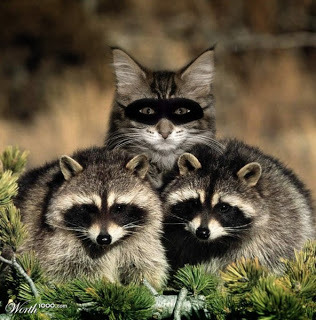
King George III wrote under the name of Ralph Robinson when he submitted an article to "Annals of Agriculture" in 1787. However his son, George IV (who became prince regent and the name behind the Regency period) was altogether more frivolous and wrote love letters under the name "Florizel" This was because George fancied himself in love with the actress Mary Robinson, who appeared as Perdita in a production of "Florizel and Perdita."
"She [Mary Robinson] is I believe almost the greatest and most perfect beauty of her sex." George IV
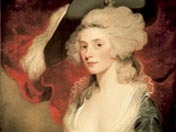 Mrs Mary Robinson or 'Perdita.'
Mrs Mary Robinson or 'Perdita.'The daughter of a failed businessman and the dupe of a lying hound of a husband, Robinson supported her family by going on the stage, aged 14, as a protegee of David Garrick. She must have been gorgeous, especially with her legs on show in the breeches parts so common in Shakespeare. Critics recognised her outstanding beauty, but also praised her acting ability in a number of roles. In 1779, the teenage Prince of Wales went to Drury Lane to see Garrick's adaptation of The Winter's Tale, and was smitten. She was the first of his many mistresses.
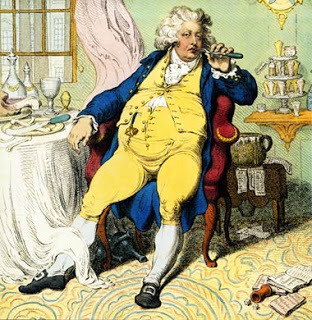 George IV, in later life.
George IV, in later life..In return, she obtained a bond of £20,000 from the future George IV (equivalent to nearly £1m today), jewels, carriages, a house in Berkeley Square and Parisian fashions that dazzled society. George Romney, Thomas Gainsborough and Joshua Reynolds painted her portrait for free. Newspapers and scandal sheets reported her every move; ladies of the town rushed to ape her manners and her style.
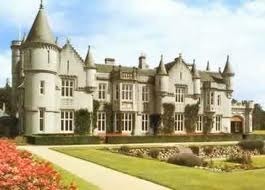 The Balmoral Estate, Scotland.Queen Victoria also used a pseudonym when travelling unofficially - The Countess of Balmoral or the Countess of Lancaster - not exactly slumming it! However few people were fooled and hailed the Countess with "Vive la Reine d'Angleterre." She also liked to fantasize when at Balmoral that she was an ordinary person and so instructed the servants to act as though she was invisible if they encountered her when out walking.
The Balmoral Estate, Scotland.Queen Victoria also used a pseudonym when travelling unofficially - The Countess of Balmoral or the Countess of Lancaster - not exactly slumming it! However few people were fooled and hailed the Countess with "Vive la Reine d'Angleterre." She also liked to fantasize when at Balmoral that she was an ordinary person and so instructed the servants to act as though she was invisible if they encountered her when out walking. In her journal, Queen Victoria describes how she and Prince Albert used pseudonyms on a journey.
"We decided to call ourself Lord and Lady Churchill and party….however Brown [John Brown, Victoria's personal servant] forgot this and called me 'Your Majesty' as I was getting into the carriage and Grant [head keeper] called Albert 'Your Royal Highness'; which set us off laughing but no one observed it."

My latest release, "Eulogy's Secret" is about identity and how appearances can be deceptive. It's an interesting thought - how much who were are depends on who people think we are!
Published on November 23, 2011 07:22
November 16, 2011
Cat's Eyes - Seeing is Believing.
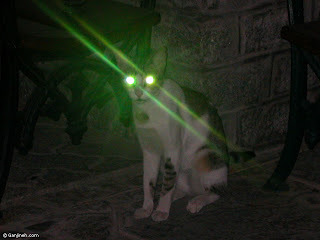
The invention of the reflective road stud widely known as the 'Cat's Eye' was inspired by a near miss in 1933 when Yorkshireman, Percy Shaw, whilst driving in thick fog swerved to avoid hitting a cat. The reflection of the car's headlights hit the back of the cat's eye and alerted him in a nick of time. Perhaps even more significantly, the cat was standing near a dangerous bend in the road that led to a sheer drop over a cliff - so not only was the cat's life saved, but very likely Shaw's.

After this near death experience it became Shaw's mission in life to develop a light-reflecting warning for roads and in 1935 he started his own company, "Reflecting Roadstuds Ltd." Shaw's other innovation was the mechanism (again the inspiration drawn from actual cat's eyes) whereby the glass was embedded in a moveable holder which depressed into the road when run over. This pushed the lens against a rubber coating which wiped it clean; much like a cat's eyelid does against the cornea. To ensure fairness, The Ministry of Transport held a competition for rival designs but after two years Shaw's were the only ones still in one piece or not silted up with road dirt.
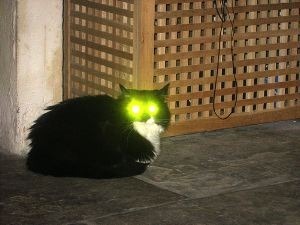
As far back as classical Egypt, a cat's eyes were worthy of note. The goddess Bast, also called Bastet, is widely known today as the "Cat Goddess. Legend has it that, by day, Bast would ride through the sky with her father, the sun god Ra, his boat pulling the sun through the sky. But by night, she transformed herself into a cat (renown for its superb night vision) to guard her father from Apep (also known as Apophis), a serpent who was her father's greatest enemy.
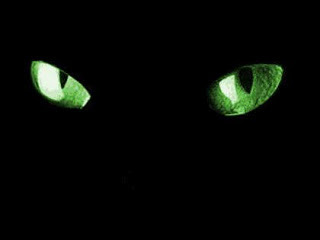
Even in the middle ages, the properties of cat's eyes were recorded as in this excerpt from John Bessewell's book from 1597:
"He [the cat] is sly and willie, and seeth so sharpely that he overcommeth darkness of the nighte by the shynigne lyghte [shining light] of his eyne [eye.]"
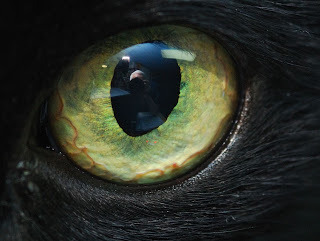
In 1868, Charles Ross enlightened (excuse the pun) readers of his work, "The Chit Chat Book of Cats" with an explanation of the workings of a cat's eye.
"The illumination of a Cat's eye in the dark arises from the external light collected on the eye and reflected from it. The cat is furnished with a bright metal-like , lustros membrane, called the Tapetum, which lines part of the hollow globe of the eye…this membrane is especially beautiful and lustrous in nocturnal animals."
Modern science tells us that the lustre is due to a high percentage of rods in the retina - which are especially sensitive to light, but Mr Ross's description perfectly describes the qualities of Shaw's cat's eye invention!
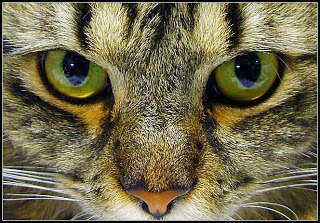
Published on November 16, 2011 08:11
November 9, 2011
Walking Eagle...and other Toilet Humour.
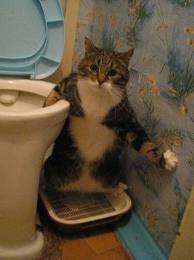
With thanks to the internet and my sharp eyed husband for the following (alledged) Tony Blair story:

On a recent trip to the United States, Tony Blair, Ex. Prime Minister of the UK, addressed a major gathering of Native American Indians. He spoke for almost an hour on his plans for a CarbonTrading Tax for the UK and Europe At the conclusion of his speech, the crowd presented him with a plaque inscribed with his new Indian name - Walking Eagle. A very chuffed Tony then departed in his motorcade, waving to the crowds. A news reporter later asked one of the Indians how they came to select the new name given to Tony Blair They explained that Walking Eagle is the name given to a bird so full of shit that it can no longer fly.

I love learning about words and phrases and with Tony Blair in mind, I discovered an interesting origin to the common British term for a toilet, politely referred to as "the cloakroom."
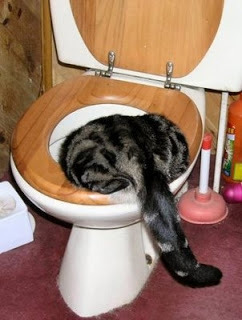
It started with the Normans who introduced the first fixed room for what we would now call an indoor toilet. The White Tower, at the Tower of London, built shortly after the Conquest, has garderobe shafts built into the thickness of the walls. (These shafts faced away from the city of London so that the newly beaten subjects wouldn't see the stains left by the conquerors' faeces) These garderobes were little more than a room with a seat over a hole, and called garderobes because they were literally places to "guard robes." It seems the ammonia rich environment was an excellent way of killing fleas and other unwelcome parasites, and so your most precious garments would be hung in the garderobe. It is from this same origin that the term 'cloakroom' is thought to have developed.

Whilst on the subject of cloakrooms and toilets, you may be interested to learn that the ancient Romans favoured a sponge tied to a stick, as the most hygienic way of wiping their bottoms - this may well be the origin for the expression "getting hold of the wrong end of the stick."!
Published on November 09, 2011 07:50
November 2, 2011
Remember, Remember the Fifth of November!

November 5th marks another anniversary for that most famous (or infamous) of British plots. It was on this day in 1605 that Guy Fawkes and conspirators attempted to blow up the Houses of Parliament during the State Opening by the King, with the entire government present. This dastardly attempt by Catholics to strike a blow against a century Protestant tyranny was discovered just minutes before the ceremony and disaster averted.

An outraged country rejoiced at what appeared Divine (and Protestant) intervention, whilst it now appears that much of what we take as fact was actually a masterstroke of early political spin that has endured for over four centuries.
Circumstantial evidence now suggests that Robert Cecil, Secretary of State and Keeper of the Privy Seal, was aware of the plot all along. He let it run safe in the knowledge that his spy network had it covered, and that it could stopped at the time most politically expedient to him.
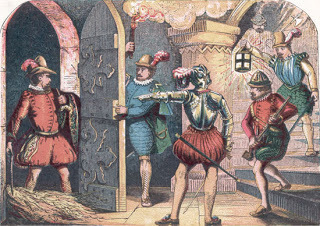 The Gunpowder plot discovered!
The Gunpowder plot discovered!"Remember, remember, the fifth of November; gunpowder, treason and plot"
-the rhyme English school children learn at school, was Cecil's work to capitalise on anti-Catholic feeling - just in case people started to forget. Its origins stem form a law passed by Parliament 8 weeks after the event, called "The Observance of 5th November Act,' which decreed a legal requirement to for an annual celebration of thanksgiving for the failure of the gunpowder plot, described as:
"…an invention so inhuman, barbarous and cruel, as the like was never before heard of."
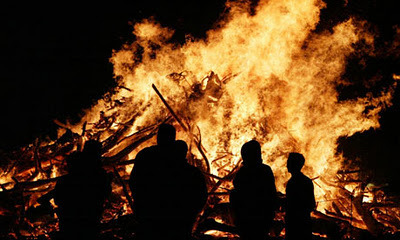
The law remained on the statute books until 1859 by which time it was so deeply ingrained on the British mindset as to be indelible. It was revoked because in the 1840's onwards, many customs associated with Guy Fawkes, such as the tradition of dressing a mannequin and collecting money "A penny for the Guy", then setting fire to him - took a nasty turn.
"…the great annoyance occasioned …by a set of idle fellows, with some horrid figure dressed up as Guy Faux, and which assembling mob, is the cause of may depredations and disorders"
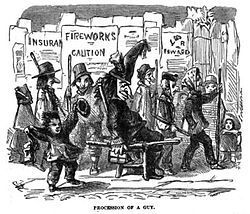 The Procession of a Guy.
The Procession of a Guy.Simmering religious tension often boiled over with such obvious 'anti-popery' on display. For example, November 6, 1838, The Times reports and fracas in the City.
"A mob of about 200 persons…paraded the northern part of the metropolis, with a donkey…on which was an effigy of Guy Fawkes….They went up Chalk [Farm] Road where they were attacked by a party of Irish labourers, who pelted them with stones."
Over the years things got so bad that the authorities had attempted to ban such celebrations…which eventually led to them moving into people's back gardens or the organised public displays we have each November 5th.

How are you celebrating this fireworks night, or do you have pets, and heartily disapprove? Do leave a comment.

Published on November 02, 2011 08:44
October 26, 2011
And So To Bed...

Have you ever wondered where the expression "hitting the sack" or "hitting the hay" comes from? Well this post will answer this and dwell on other bed-related trivia.
"Hitting the sack" it derives from the medieval version of a bed which was simply a sack filled with hay and placed on the floor. This mattress was also known as a "palliasse" from the French word "paille" meaning straw.
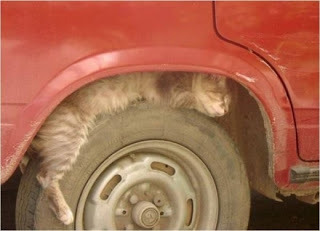
In medieval times, life was much more communal than it is today. Those who lived and worked at a Manor House, usually slept either at their place of work (kitchen, stables, et.c) or together in the great hall. As a sign of their superiority the blood family owning the manor house would sleep in an upstairs room adjoining the hall. This was called "the chamber" and the special servant overseeing this room known as the "chamberlain." Often the Lord of the Manor would have a peep hole through which he could literally "look down" on his employees and check what they were up to in the hall below.
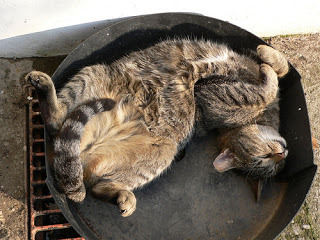
In the 17th century people were still accustomed to sharing beds. It was a sign of a child's maturity to be invited into her parents bed. When the daughter of Lady Anne Clifford reached three, she was encouraged to leave baby-hood behind by wearing a whalebone bodice, walking without leading reins and sleeping in her mother's bed. Sharing a bed was considered a sign of growing up and leaving the cot behind, rather than a regressive step as it's often seen today.

Expressions such as "you make an ill-bed fellow" originate from the custom of many people sharing one bed for warmth and security. But even in a communal bed there was an etiquette to who slept where. In 19th century rural Ireland the eldest daughter lay closest to the wall, followed in age succession by her sisters, then the mother who lay next to the father, and then sons in age succession - in effect keeping the daughters as far away from interlopers as possible.
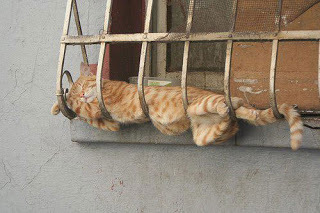
Earliest beds or "pallets" were akin to large wooden boxes with a mattress on top and could be pushed under other furniture when not in use. By Tudor times, bed design for the wealthy had moved on and the mattress lay upon bed strings. These were ropes laced up and down, and across, the bed frame. Under the weight of sleeper and bedding these ropes sagged and required regular tightening, hence the expression:
"Night, night, sleep tight." [image error]
Interestingly, with the advent of four poster beds, as well as keeping in heat the canopy served a dual purpose of catching insects and vermin that dropped out of the rafters, since many early houses didn't have ceilings separating the chamber from the roof.
16th and 17th century, the wealthy had feather mattresses. These were expensive - requiring around 50 lbs of feathers, and so largely the province of the well off. However some female servants were allowed to keep the feathers of birds plucked ready for the table, and collect them as a sort of dowry towards the creation of a marital bed.

And finally.
It was the Georgian's who came up with the idea of bedroom doors opening inwards - to afford those inside vital seconds to compose themselves before public scrutiny. And the Victorian's who segregated husband and wife to separate sleeping apartments. A lady's own dressing room was also known as her "boudoir" from the French verb "bouder" - to sulk.
So how about you? Do you mind where you sleep or will any place to rest your head do?
Published on October 26, 2011 06:00
October 19, 2011
A Quaint British Custom?
A Quaint British Custom? - Driving on the Left.
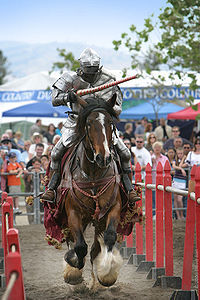
If you are planning to visit the UK and happen to come from one of the many countries that drive on the wrong side of the road, the following advice, direct from the Ministry of Transport, is for you:
"Visitors are informed that in the United Kingdom traffic drives on the left-hand side of the road. In the interests of safety, you are advised to practise this in your country of origin for a week or two before driving in the UK."
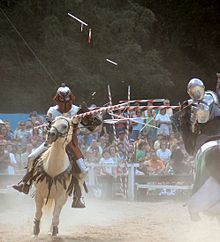
This week's blog post was inspired by reading an article about the origins of why the British drive on the left side of the road. Apparently, the convention for driving on the left dates back to medieval jousts and the dominance of right-handedness!
During a medieval joust, two knights would face each other across the lists, gallop towards each other with the intention of unseating the opponent with a lance. Since most men are right handed, the lance was gripped with the right arm and balanced across the body so that the lance-head was angled to the left.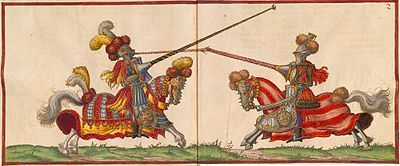
However, to me this idea seems flawed. In the photo the horses pass left flank to left flank, but if this was translated to the road, the rider would be on the right hand side of the road - this calls for more research!
It appears that in violent times, such as feudal Europe, since most people are right handed, swordsmen preferred to pass in the street with their sword arm (ie right arm) closer to any opponent ie walk of the left side. This also reduced the chance of the scabbard, which was worn on the left side of the body, hitting people, and kept the sword further away from felons.
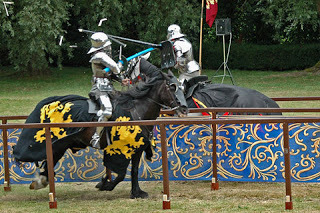
Added to that, it is easier for a right-handed person to mount a horse from the left side. With a sword worn to the left for right-handed access across the body, the right leg is free to swing unimpeded across the horses back. Obviously it is safer to mount and dismount on the edge of the road (ie the left) rather than in the middle of a stream of traffic (to the right)
The continental custom for driving on the right was introduced by the Emperor Napoleon, who happened to be left handed . Since it was he who established the first road system across Europe he adopted right-hand drive.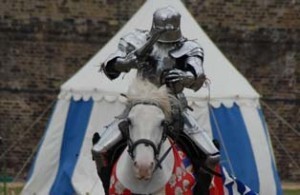
So why chose the right side of the road at all?
In the US in the late 1700's, large farm wagons were pulled by teamsters which involved several teams of horses hitched to one wagon. These vehicles had no driver's seat but were controlled by the driver sitting on the left rear horse, so that his right arm was free to whip up the horses. Also, when sitting on the left he could watch to make sure he was sure his wagon was clear of oncoming wheels - and therefore kept to the right side of the road.
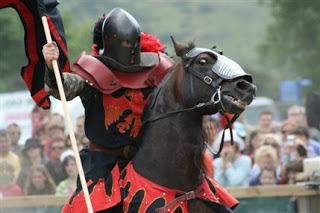
Added to this, during the French Revolution (1789) driving on the right gained a boost. This was because the aristocracy travelled on the left, forcing peasants out of the way to the right. When the aristocrats were trying to keep a low profile, they to adopted the right side of the road!
Don't you just love history!!!



If you are planning to visit the UK and happen to come from one of the many countries that drive on the wrong side of the road, the following advice, direct from the Ministry of Transport, is for you:
"Visitors are informed that in the United Kingdom traffic drives on the left-hand side of the road. In the interests of safety, you are advised to practise this in your country of origin for a week or two before driving in the UK."

This week's blog post was inspired by reading an article about the origins of why the British drive on the left side of the road. Apparently, the convention for driving on the left dates back to medieval jousts and the dominance of right-handedness!
During a medieval joust, two knights would face each other across the lists, gallop towards each other with the intention of unseating the opponent with a lance. Since most men are right handed, the lance was gripped with the right arm and balanced across the body so that the lance-head was angled to the left.

However, to me this idea seems flawed. In the photo the horses pass left flank to left flank, but if this was translated to the road, the rider would be on the right hand side of the road - this calls for more research!
It appears that in violent times, such as feudal Europe, since most people are right handed, swordsmen preferred to pass in the street with their sword arm (ie right arm) closer to any opponent ie walk of the left side. This also reduced the chance of the scabbard, which was worn on the left side of the body, hitting people, and kept the sword further away from felons.

Added to that, it is easier for a right-handed person to mount a horse from the left side. With a sword worn to the left for right-handed access across the body, the right leg is free to swing unimpeded across the horses back. Obviously it is safer to mount and dismount on the edge of the road (ie the left) rather than in the middle of a stream of traffic (to the right)
The continental custom for driving on the right was introduced by the Emperor Napoleon, who happened to be left handed . Since it was he who established the first road system across Europe he adopted right-hand drive.

So why chose the right side of the road at all?
In the US in the late 1700's, large farm wagons were pulled by teamsters which involved several teams of horses hitched to one wagon. These vehicles had no driver's seat but were controlled by the driver sitting on the left rear horse, so that his right arm was free to whip up the horses. Also, when sitting on the left he could watch to make sure he was sure his wagon was clear of oncoming wheels - and therefore kept to the right side of the road.

Added to this, during the French Revolution (1789) driving on the right gained a boost. This was because the aristocracy travelled on the left, forcing peasants out of the way to the right. When the aristocrats were trying to keep a low profile, they to adopted the right side of the road!
Don't you just love history!!!

Published on October 19, 2011 08:25
October 12, 2011
King Henry VIII - Fat or Fiction?
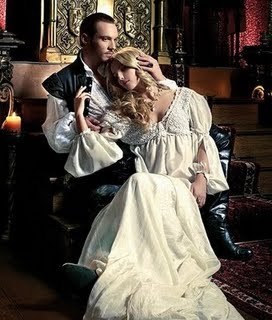 Henry with Jane Seymour, his third wife.
Henry with Jane Seymour, his third wife.I thought it would be fun to compare Henry VIII, as created in TV series, The Tudors, with accounts of the real king. In his later life King Henry VIII was famed for being obese:
" …[King Henry VIII] laboured under the burden of extreme fat and [an] unwieldy body."Edward, 1st Baron Herbert of Cherbury.
However chief executive producer of The Tudors, Morgan O'Sullivan was refreshingly honest about his attitude to Johnathan Rhys Myers portrayal of the ageing king:
"We still want him to be appealing. We don't want to destroy his good looks. An exact portrayal of Henry is not a factor that we think is important."
Henry VIII reigned from 1509 to 1547 and in his youth was evidently a very handsome man:
"His majesty is the handsomest potentate I ever set eyes on." Venetian visitor.

At 6 ft 2 inches he was tall, even compared the average height of a UK man today, at 5ft 9 inches. He was an active man who loved to hunt, joust, wrestle and play tennis but food played a prominent part at his court. In one year alone Henry's court consumed 1240 oxen, 8200 sheep, 2330 deer, 760 calves, 1870 pigs, 53 wild boar and innumberable birds from swans to peacocks, fish and even whale, accompanied by 600,000 gallons of ale.
Food was used as a demonstration of England's cultural superiority, a demonstration to visiting princes and foreign diplomats of her levels of wealth and luxury. But it was perhaps two factors that doomed Henry to his eventual morbid obesity: ill health which meant he could no longer exercise, and the death of his beloved third wife, Jane Seymour. Accounts suggest that after Jane's death in 1536, twelve days after giving birth to their son, Edward, King Henry turned to food for comfort.
Studies of Henry's suits of armour also speak of a steady increase in his girth:
1512 32 inch waist1520 35 inches 1545 54 inches
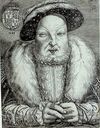 Jowly portrait by Matsys.
Jowly portrait by Matsys.By 1544, a portrait by Cornelys Matsys showed Henry's cheeks sagging with fat and eyes mouth mere slits in the blubber and by 1546 he could hardly walk and had to be carried around in special chairs called "Trams." It was around this time that Henry, famously, had to be winched on and off his horse.
Henry died 28 January 1547, aged 55. His cadaver was placed in a lead coffin within a 6ft 10 inch elm chest and it took 16 yeoman of exceptional strength to manoeuvre the coffin.
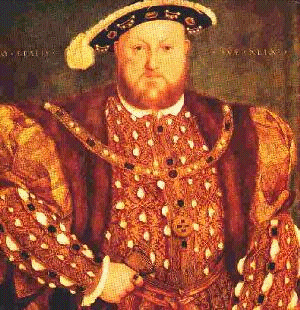
Modern medical assessment suggest that at his death Henry had a BMI of 35 (normal 20-25) and weighed around 30 stones (normal for a 6ft 2 inch man is 13 stone) and was morbidly obese.
"Fat Henry sat upon the throneAnd cast his eye on harm sir.No, no Sir cook, I do proponeI think I'll have the lamb sir."19th century nursery rhyme.
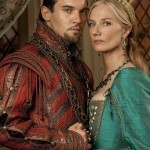 A romanticised version of Henry with the wife who outlived him.
A romanticised version of Henry with the wife who outlived him.But let's leave the final word to The Tudor's star, J. Rhys Myers himself. The actor made it clear he never intended to pig out to get into character.
" …[actors] are not famous because they're pug ugly."
And he argued it there was no point selling historical drama featuring "… a big, fat 250 lb red-haired guy with a beard."
Got to admire his honesty!
So do you think JRM was right to go for glamour, or should he have bulked up?
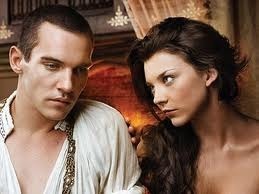 A younger Henry with Anne Boleyn.
A younger Henry with Anne Boleyn.
Published on October 12, 2011 02:52
October 9, 2011
Nude or Prude? Victorian Attitudes to Nudity and Sea-Bathing..
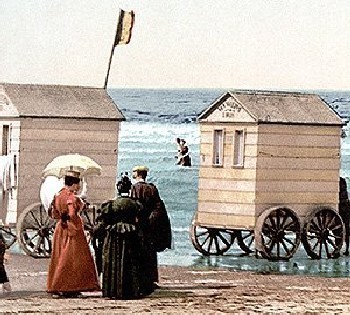
I am currently researching Georgian and Victorian attitudes to marriage and after a particularly pleasing foray into a second hand bookshop, came home with a real gem - 'The Perfect Wife,' by Rona Randall.
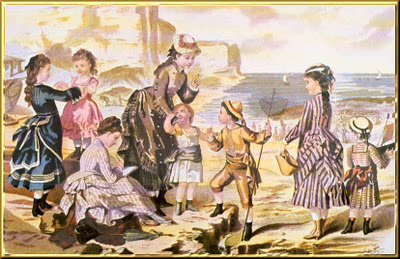
Skimming through this book, a passage caught my eye, about Victorian attitudes to nudity. In short, in the Victorian bedroom nudity was to be avoided at all costs. Even sisters sharing a bedroom would stand back to back, and undress beneath voluminous night gowns. Indeed husband's often disrobed in an ajoining room to don his night shirt and didnt enter the bed chamber until his wife was safely attired in billowing nightgown and frilly cap.
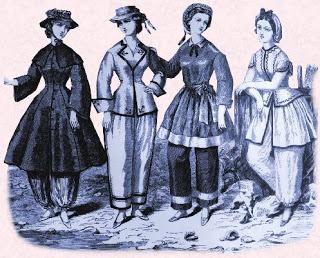
With this in mind it came as a quite shock to also read that some early Victorians thought nothing of bathing nude in the sea! The invention of swimming costumes came as late as 1870 and before this the options were a bathing hut wheeled into the sea or to cavort naked in the waves. It seems the later was not as exceptional as you might suspect, andmany preferred nude bathing! In the summer months the correspondance columnos of local newspapers were full of complaints about the;
'shameless seaside cavortings of loose women and unblushing men...'
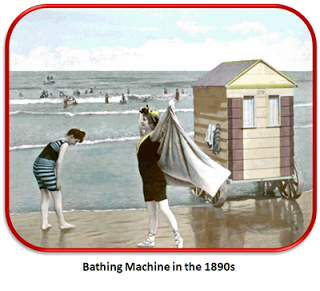
However one naked bather, the Rev Francis Kilbert, was anything but loose morals. In his diary he extols the delights of nude sea bathing and somewhat innocently complains about,
'the detestable custom of bathing drawers that are now becoming de rigeur.'
It seems he created quite a stir at Seaton 1873 when unaware of the new requirement for wearing bathing suites, especially as;
'the young ladies strolling near seemed to have no objection.'
One newspaper, the Saturday Review, commented on the habit of some women activley seeking out male nude bathers;
'There they sit [women] happy, innocent, undistrubed - placidly and immovably gaze at hundreds of males in the costume of Adam.'
Who'd have thought!
 Coming...November 2011
Coming...November 2011
Published on October 09, 2011 06:33
October 5, 2011
Publish and Be Damned!
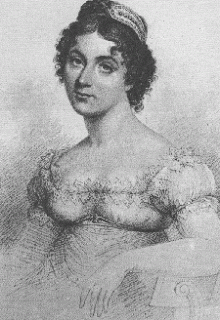 A contempory portrait of courtesan, Harriette Wilson.Have you ever paused to wonder where the expression, "Publish and be damned" comes from? In truth, I hadn't thought about it, until I read the story of Harriette Wilson's memoirs and the proverbial penny dropped.
A contempory portrait of courtesan, Harriette Wilson.Have you ever paused to wonder where the expression, "Publish and be damned" comes from? In truth, I hadn't thought about it, until I read the story of Harriette Wilson's memoirs and the proverbial penny dropped. In the 18th century Harriette Wilson was celebrated and adored amongst men - for Harriette was a courtesan. She was one of three prostitute sisters, banded together under the name of 'the Three Graces.'
At a time when social etiquette was everything, Harriette's attitude was:
"A fifty pound note is as good as an introduction."
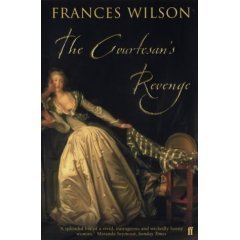 Frances Wilson's fascinating book on Harriette.She was lively, extravagant and outrageous, and must have been like a breath of fresh air to some of the men who called on her services. She had many famous lovers whom she listed in order of rank:
Frances Wilson's fascinating book on Harriette.She was lively, extravagant and outrageous, and must have been like a breath of fresh air to some of the men who called on her services. She had many famous lovers whom she listed in order of rank: "Dukes: Argyle, Beaufort, Leinster …..Wellington.Marquesses: Anglesey, Bath, Hertford"
…and so on, working her way through Burke's Peerage to the modest Esquires. However when she fell on hard times, ever a woman of ingenuity, she channelled her formidable skills into writing an autobiography. She then sent copies of the manuscript to her high-born conquests with a note saying:
"Two hundred pounds by return of post, to be left out."
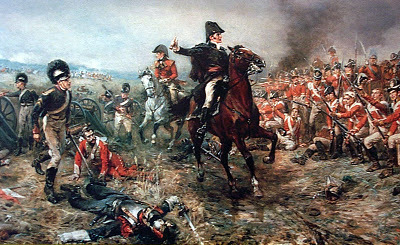 Duke of Wellington, hero of Waterloo, commanding his troops.One of the few men to resist this unprincipled blackmail was the Duke of Wellington, who reputedly scribbled:
Duke of Wellington, hero of Waterloo, commanding his troops.One of the few men to resist this unprincipled blackmail was the Duke of Wellington, who reputedly scribbled: "Publish and be damned" on the papers before sending them back. Accordingly, Harriette was less than flattering in her account of him in her memoirs.
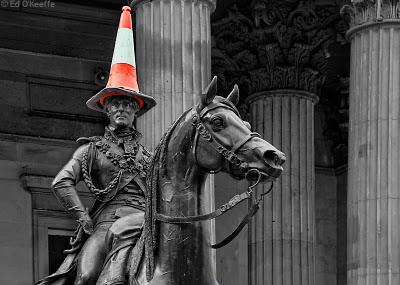 The Duke of Wellington - looking slightly less heroic.I leave you with a sample of Harriette's style:
The Duke of Wellington - looking slightly less heroic.I leave you with a sample of Harriette's style: "Beautiful creature!" uttered Wellington. "Beautiful eyes, yours."
Wellington was now my constant visitor – a most unentertaining one, Heaven knows! And in the evening, when he wore his broad red ribbon, he looked very like a rat-catcher."

Published on October 05, 2011 09:12
'Familiar Felines.'
Following on from last weeks Halloween posting, today's blog post looks at the unwanted image of cats as the witches familiar - from the Norse Goddess Freya to lonely women in the middle ages.
The full Following on from last weeks Halloween posting, today's blog post looks at the unwanted image of cats as the witches familiar - from the Norse Goddess Freya to lonely women in the middle ages.
The full post can found at:
http://graceelliot-author.blogspot.com
...more
The full Following on from last weeks Halloween posting, today's blog post looks at the unwanted image of cats as the witches familiar - from the Norse Goddess Freya to lonely women in the middle ages.
The full post can found at:
http://graceelliot-author.blogspot.com
...more
- Grace Elliot's profile
- 156 followers



